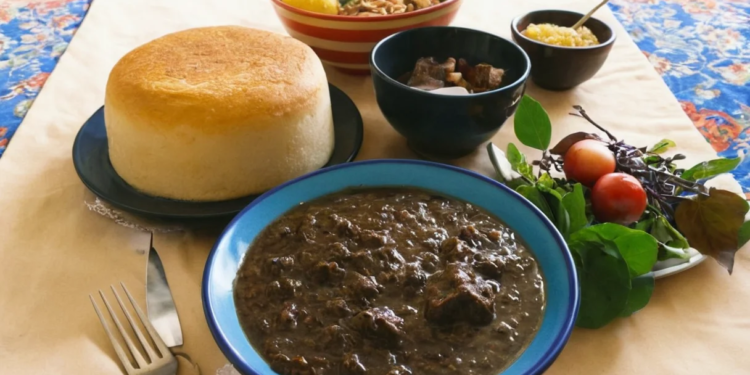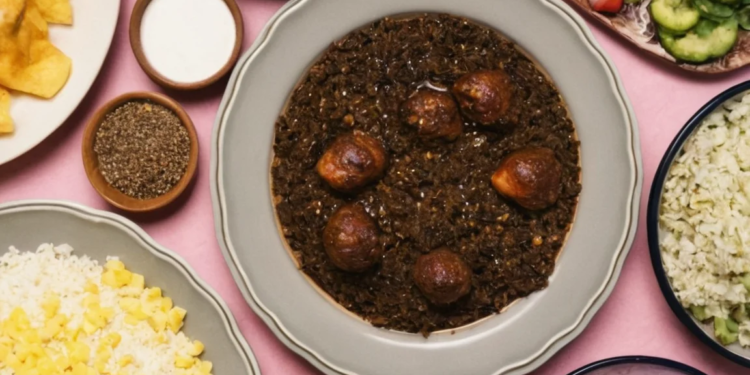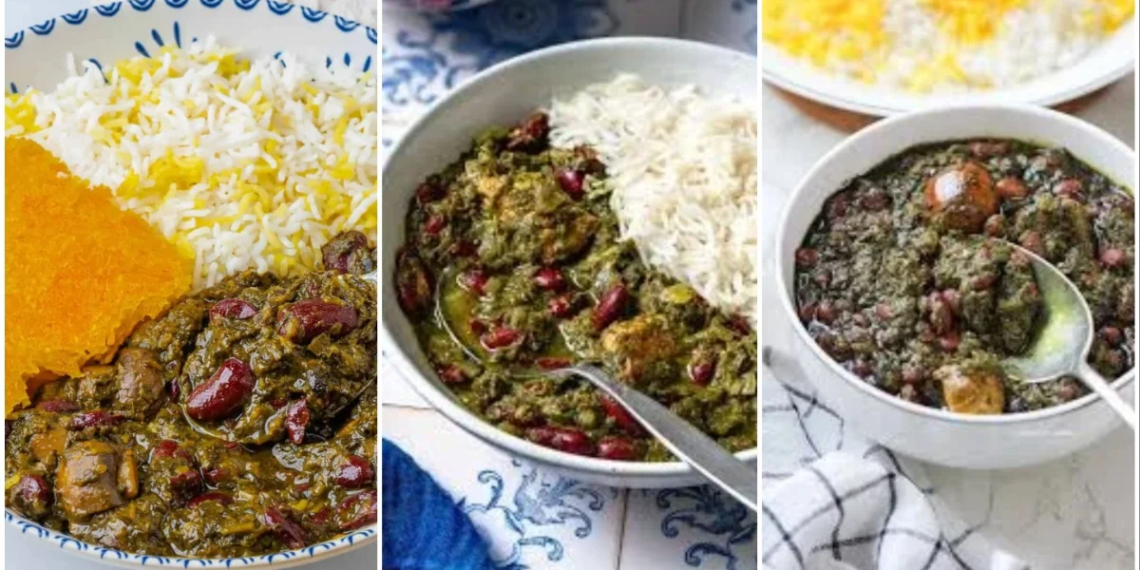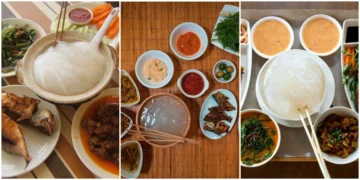Iran is a country full of artistic marvels, captivating landscapes, and rich ancient history, which has given rise to various cultural traditions. One of them is cooking, which gives birth to delicious dishes considered to be a part of sophisticated national history. The best food of Iran is Ghormeh Sabzi. This iconic dish is cooked with tender meat and kidney beans and takes time to slow roast until all the spices are well-infused. Ghormeh Sabzi represents more than just food; it illustrates the love and bond Iranians share with their country and showcases a centuries-old tradition honed over generations.
Why Ghormeh Sabzi Is the Best Food of Iran?

The marvelous qualities of Ghormeh Sabzi have made this dish gain remarkable fame because it captures the essence of Iranian cuisine and identity perfectly. Fresh herbs and spices, along with tender meat, slowly blend together, bringing out the magic of Ghormeh Sabzi, a heartwarming stew that strengthens the spirit and nourishes the body. This dish has quite a backstory. It was first made by ingenious chefs in the countryside of Iran. With the rich and bold flavor it offers, Ghormeh Sabzi can turn even the most basic ingredients into a traditional masterpiece. From family lunches and festivals to fine dining, it is served everywhere, uniting people of different generations and social status through every aromatic bite.
In the Iranian community, a meal is an opportunity not only to enjoy good food but to share precious moments with family and friends. This culinary tradition stirs up cherished memories of home and heritage, making it beloved not only for its unrivaled taste but also for the sense of community and national pride it evokes.
Important Ingredients of Ghormeh Sabzi
- Meat: Generally, lamb or beef is incorporated and is cut into small chunks. The meat is slow-cooked until tender so that it can absorb the robust taste of the herbs and spices.
- Kidney Beans: These incorporate additional texture alongside a subtle earthiness. They cook into the hearty stew during the enduring cooking stage.
- Herbs (Sabzi): The star of Ghormeh Sabzi is a generous mix of finely chopped fresh herbs. Normally this includes parsley, dhania, fenugreek leaves and occasionally a little bit of dill or spring onions. These herbs are responsible for giving the stew its characteristic aromatic and somewhat bitter taste.
- Onions and Garlic: Sautéed onions and garlic supply a strong flavor base which makes the sweetness of both the meat and the herbs even more delicious.
- Dried Limes (Omani Limes): The swift addition of Limu Omani not only makes you smell the stew, but, adds a slightly sour taste that cuts through the rich balance of the stew, potency of the spices, and the volume of meat.
- Spices: The seasoning for the dish includes traditional spices like turmeric, black pepper, and a pinch of salt. Some regional variations of the recipes add a hint of cinnamon or cardamom for additional warmth.
- Oil or Butter: A small quantity of oil (or butter) is used to sauté the aromatics, which add flavor to the bottom of the stew.
- Water or Broth: To gently cook, a liquid base, commonly water or a light meat broth, is required. This lets the ingredients steep slowly and amalgamate them into a thick sauce with a rich flavor profile.
Preparation of Ghormeh Sabzi (Best Food of Iran)
- Preparing Herbs: Foremost, a generous helping of parsley, cilantro, and fenugreek leaves is washed and then chopped finely. Every bit of these herbs contributes to the delicious outcome. In many households, the herbs are sometimes not cooked, but rather sizzling in a hot pan with oil for about 30 seconds to preserve their natural beauty and taste while their scent is set free. Their preservation is vital during the preparation of various stages of the stew.
- Browning the Meat: Lamb or beef cut into chunks is browned in oil or butter to a golden crisp for the meat to fully brown all the way through. In large, heavy-bottomed pots, these meats are either simmered or browned for even longer, depending on taste and consistency, along with water to enhance flavor during a long cook.
- Sauteing Aromatics: Once the meat is set aside, the drippings left in the pan following from cooking the meat and browning eintensely packed ingredients as well as furter onions and half shaped garlic should be added. Ensure simmering until you get a nice, golden light brown.
- Incorporating the Components: The sautéed aromatics are used alongside the browned meat. Following this the kidney beans are poured in, and afterward the herbs are added. To release their sour notes during cooking, the dried limes can be pierced with a fork or left whole.
Cooking Ghormeh Sabzi
The pot is filled with either water or broth, bringing it to a gentle boil. Covering the pot, it is left to simmer on the lowest heat for two to three hours; this is an essential stage because it allows the flavors to blend—it helps the meat tenderize, herbs permeate richly, and the stew thickens. “Melt-in-your-mouth” is the phrase for meat because of how tender it becomes after cooking.
Dried limes are taken out, and if extra acidity is to be added they are mashed into the stew. At this point the taste is balanced with salt, black pepper, and some turmeric for the desired warmth. Extra milled lime juice could also be added but becomes optional at this stage. Just before serving, the last step is putting fresh herbs for a vibrant color that also adds fragrance.
Like many stews in Persian cuisine, Ghormeh Sabzi is served with steamed basmati rice or Persian breads like lavash. Each serving is described as a combination of soft meat, beans, and the signature flavor of dried limes.
What Makes Ghormeh Sabzi Unique?

What makes Ghormeh Sabzi special is the cultural history and the wonderful blend of flavors. The combination of fresh, aromatic herbs with the deep, savory taste of slowly braised meat yields. Dried limes are perhaps the most unique touch. These small, shriveled, wrinkled fruits impart their sharply acidic taste to the stew.
Tracing your culinary roots, the idea of using fresh ingredients in cooking was notable and valued. Along the course of history, this dish not only gained recognition. However, it evolved to incorporate local and regional tastes as well. As Persian poetry depicts and praises the dish, Ghormeh Sabzi has a fond place in the hearts of people. It symbolizes cherished family gatherings and the lavish Persian presence that existed long ago. It serves its purpose as a reminder just how important food is when it comes to uniting cultures and people.
Other Iranian Dishes
- Fesenjan: A rich stew prepared using duck or chicken, blended together with pomegranate molasses and walnuts.
- Chelo Kebab: It consists of well-grilled meat on a skewer served with a side of saffron rice.
- Zereshk Polo: A delicious accompaniment often prepared with chicken. It contains saffron and savory barberries along with sweet rice, and a soft, sweet, and sour taste.
- Ash Reshteh: A famous Persian noodle soup that contains multiple beans, various herbs, and sometimes kashk.










Discussion about this post